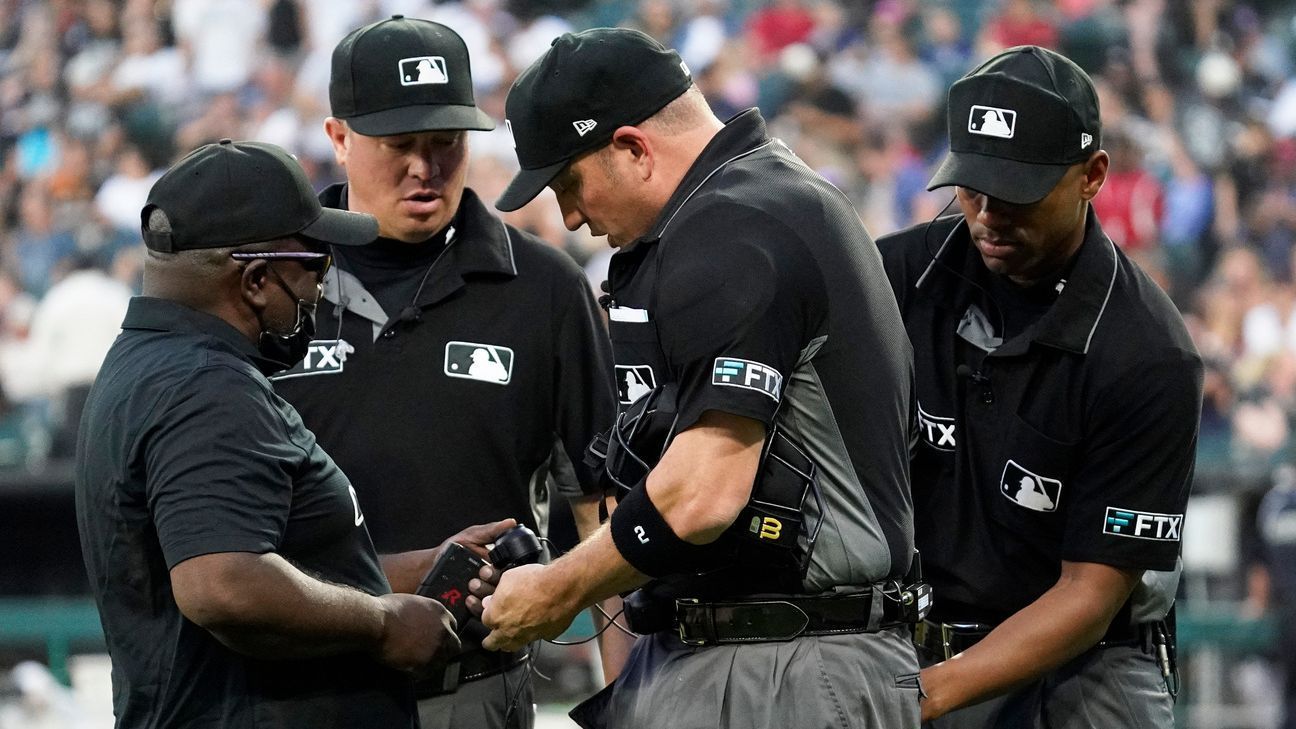Major League Baseball’s new rules didn’t impact scoring significantly in Spring Training, and oddsmakers began the season without adjusting their numbers on runs scored, while taking a wait-and-see approach to the pitch clock and elimination of the infield shift.
MLB games have averaged 9.1 runs scored over the past five seasons. Last year’s 8.57 runs per game was the lowest since 2015. Spring Training games, with the new rules implemented, averaged 10.1 runs, down slightly from last year.
Pitchers have 15 seconds to throw a pitch with the bases empty and 20 seconds with a runner on base. Hitters must be in the batter’s box with eight seconds on the pitch clock. Hitters are allowed one timeout per at-bat to reset the pitch clock. Pitchers are restricted to stepping off the rubber only twice per plate appearance, including for pick-off attempts. The rule resets if a runner advances during the same plate appearance. And larger bases are being used to increase the success rate on steals.
“We don’t really see a direct correlation from the pitch clock to more scoring,” said Randy Blum, who oversees baseball odds for the SuperBook in Las Vegas. “We were not planning on adjusting our totals off that.”
Halvor England, BetMGM’s lead baseball trader, expects the elimination of the traditional shift to increase scoring marginally, but also believes pitchers will have more control over the hitter during an at-bat because of the pitch clock.
“I think it’s going to be a little more offsetting than people realize, almost a wash,” Halvor said. “I don’t anticipate there to be less scoring overall, but on a game-to-game basis, it’s going to be very marginal.”
The bigger bases being used this season, however, are a difference-maker in bookmakers’ and bettors’ eyes. Steals were up notably in success rate and volume — nearly double from last Spring Training — this year. Bettors expect the trend to continue during the regular season.
The SuperBook offered a season-long prop on the over/under on most stolen bases by an individual player. Blum said the book opened the total at 50.5, a number that reflected about four to five more stolen bases than if the rule had not been in place. Still, sharp bettors took the over, causing the SuperBook to move the number to 52.5.
“That’s one thing [larger bases] that we did adjust our numbers on based on the rule changes, and it seems to be something that the bettors are taking note of also,” Blum said. “That was not necessarily a prop that in the past would get a lot of attention either way.”
Joe Fortuna, a veteran professional bettor and baseball fan, said he did edge his numbers up on runs scored because of the rules changes and was looking to bet overs early in the season for multiple reasons, including potential pitchers’ fatigue while working with the pitch clock.
“These guys, in April, might be a little bit out of shape, so I don’t know if running 100-mph pitches up there every 15 seconds will make them tire out faster,” Fortuna said. “The different rules all seemed to lean toward hitting to us.”
Fortuna also examined which hitters faced the most infield shifts last season and pointed out left-handed batters like San Diego’s Juan Soto, Texas’ Corey Seager and Kansas City’s Vinnie Pasquantino as ones who could benefit from its elimination.
“The shift is huge to me,” Fortuna said. “We actually bet on Pasquantino to win MVP today at 250-1. He batted .295 last year and faced 93.8% three-man shifts. That was the highest.”
For now, only one day into the season, bettors and bookmakers will be watching closely to see if there are any trends related to the new rule changes, but early on, it’ll be a guessing game.
“There will be some advantage for bettors if they can figure it all out quicker than the market,” Halvor said.
